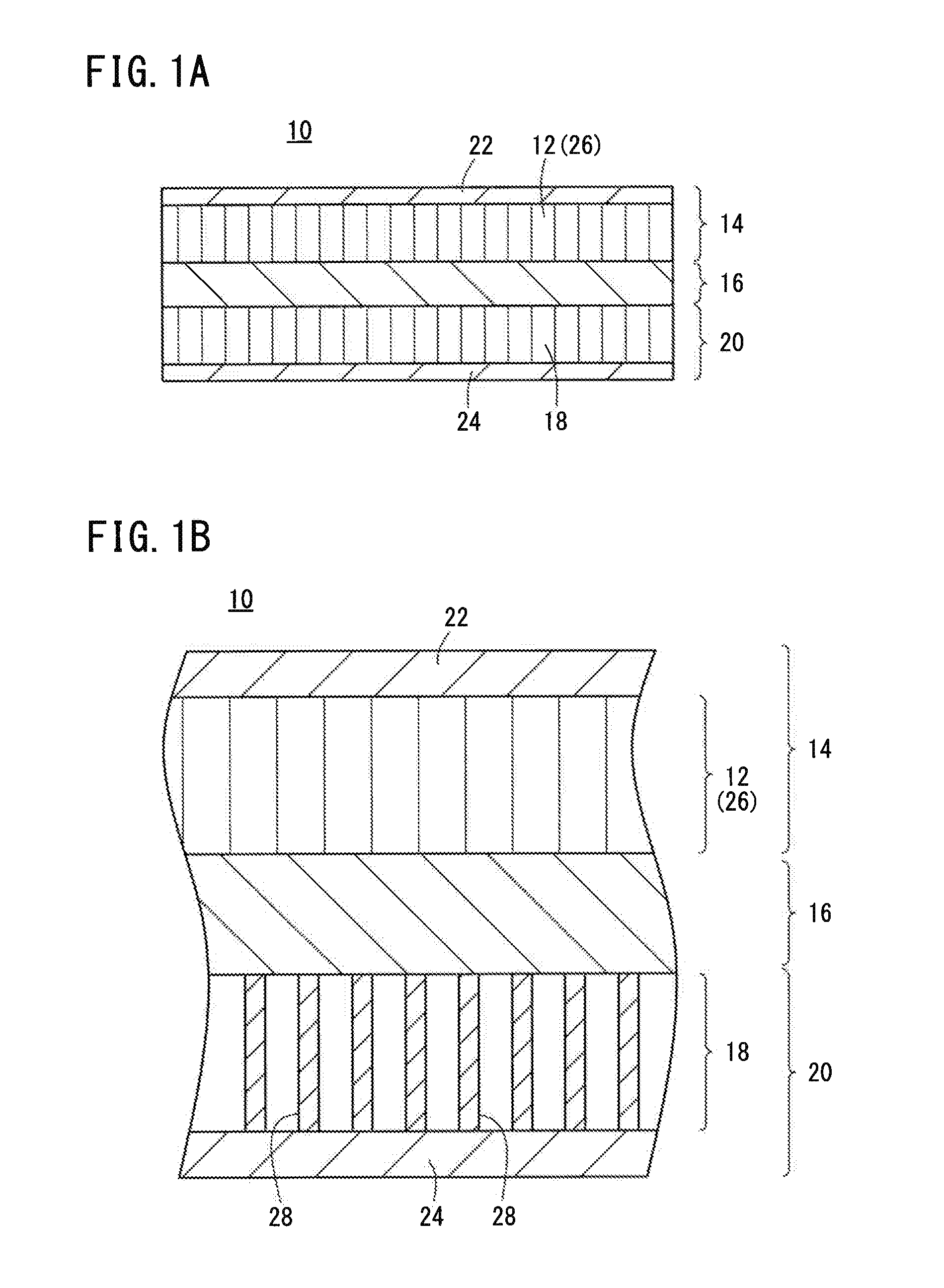All-solid-state cell
a cell and solid-state technology, applied in the field of all-solid-state cells, can solve the problems of battery capacity that cannot be high, lithium ions cannot be emitted and inserted, battery can only be improved only to a limited extent, etc., and achieve high battery capacity and high resistance
- Summary
- Abstract
- Description
- Claims
- Application Information
AI Technical Summary
Benefits of technology
Problems solved by technology
Method used
Image
Examples
modification example
[0090]In the above-described embodiment, in the layer 26 of the positive electrode active material 12, the (003) planes of the particles having the layered rock salt structure represented by the above general formula are oriented in the direction from the positive electrode layer 14 toward the negative electrode layer 20. Alternatively, as shown in FIG. 6, in an all-solid-state cell 10a according to a modification example, a layer 46 may be formed as the positive electrode active material 12 by mixing the particles having the layered rock salt structure represented by the general formula with the particles for the solid electrolyte layer, and by press-forming the mixture.
first example
[0091]In all-solid-state cells of Example 1, Example 2, Reference Example 1, and Comparative Example 1, changes of the volumetric energy densities with respect to various thicknesses of the solid electrolyte layer 16 were evaluated by a simulation test.
[0092]In First Example, when each all-solid-state cell was observed from above, both the horizontal and vertical lengths of the cell were 10 mm, and the thickness of the positive electrode active material 12 was 50 μm.
[0093]Characteristics of Example 1, Example 2, Reference Example 1, and Comparative Example 1 will be described below.
example 1
[0094]As shown in FIG. 7A, the all-solid-state cell of Example 1 had the same structure as the all-solid-state cell 10 of the above embodiment (see FIG. 1).
[0095]The positive electrode active material 12 contained layered rock salt-type particles having a composition of Li(Ni0.8Co0.15Al0.05)O2 (hereinafter simply referred to as NCA), and the (003) planes of the particles were oriented in the direction from the positive electrode layer 14 toward the negative electrode layer 20. The positive electrode active material 12 had a thickness of 50 μm.
[0096]The lithium ion conducting material in the solid electrolyte layer 16 contained garnet-type crystals having a composition of Li7La3Zr2O12 (hereinafter simply referred to as LLZ).
[0097]The negative electrode active material 18 contained a carbon nanotube array of a plurality of cylindrical carbon nanotube molecules 28 (hereinafter referred to as CNTA). The axes of the carbon nanotube molecules 28 were oriented in the direction from the pos...
PUM
| Property | Measurement | Unit |
|---|---|---|
| thickness | aaaaa | aaaaa |
| angle | aaaaa | aaaaa |
| thickness | aaaaa | aaaaa |
Abstract
Description
Claims
Application Information
 Login to View More
Login to View More - R&D
- Intellectual Property
- Life Sciences
- Materials
- Tech Scout
- Unparalleled Data Quality
- Higher Quality Content
- 60% Fewer Hallucinations
Browse by: Latest US Patents, China's latest patents, Technical Efficacy Thesaurus, Application Domain, Technology Topic, Popular Technical Reports.
© 2025 PatSnap. All rights reserved.Legal|Privacy policy|Modern Slavery Act Transparency Statement|Sitemap|About US| Contact US: help@patsnap.com



